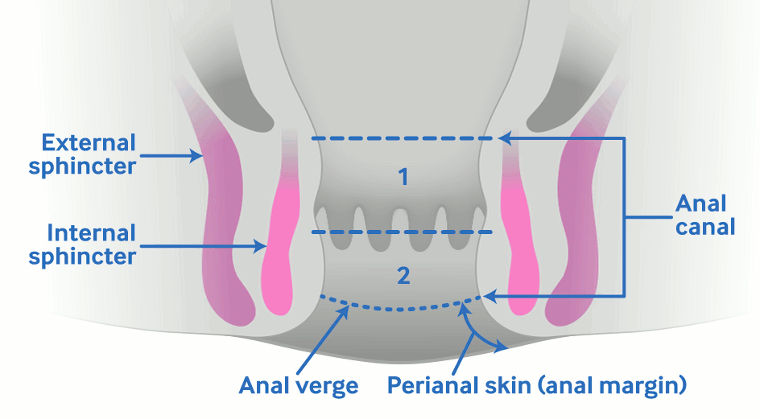小结
定义
病史和体格检查
关键诊断因素
- rectal bleeding
- rectal pain
- rectal mass
其他诊断因素
- anal discharge
- anal itching
- fecal incontinence
- anal fistula
- non-healing ulcer
- inguinal node mass
- features of distant metastasis
危险因素
- HPV
- HIV
- immunosuppression
- receptive anal intercourse
- multiple sexual partners
- autoimmune disease
- smoking
- anal intraepithelial neoplasia
- anal fistula
诊断性检查
首要检查
- anoscopy
- biopsy of tumor
- pelvis MRI scan
- pelvis CT scan
- abdominal and chest CT scan
需考虑的检查
- PET scan
- inguinal node needle biopsy
- serum HIV enzyme-linked immunosorbent assay (ELISA)
- cervical cancer screening
治疗流程
locoregional disease
distant metastatic disease
撰稿人
作者
Bruce D. Minsky, MD
Professor and Frank T. McGraw Endowed Chair
Radiation Oncology
MD Anderson Cancer Center
Houston
TX
Divulgaciones
BDM declares that he has no competing interests.
Revisores por pares
Brian Czito, MD
Associate Professor
Department of Radiation Oncology
Duke University Medical Center
Durham
NC
Divulgaciones
BC declares that he has no competing interests.
Lisa Kachnic, MD
Chief and Associate Professor
Department of Radiation Oncology
Boston University Medical Center
Boston
MA
Divulgaciones
LK has received funding from the US Department of Defense to perform research on non-anal cancers. LK is the author of a study referenced in this topic.
Sue Clark, MD
Consultant Colorectal Surgeon
Assistant Director
The Polyposis Registry
St Mark's Hospital
Harrow
UK
Divulgaciones
SC declares that she has no competing interests.
Agradecimiento de los revisores por pares
Los temas de BMJ Best Practice se actualizan de forma continua de acuerdo con los desarrollos en la evidencia y en las guías. Los revisores por pares listados aquí han revisado el contenido al menos una vez durante la historia del tema.
Divulgaciones
Las afiliaciones y divulgaciones de los revisores por pares se refieren al momento de la revisión.
Referencias
Artículos principales
Rao S, Guren MG, Khan K, et al. Anal cancer: ESMO clinical practice guidelines for diagnosis, treatment and follow-up. Ann Oncol. 2021 Sep;32(9):1087-100.Texto completo Resumen
National Comprehensive Cancer Network. NCCN clinical practice guidelines in oncology: anal carcinoma [internet publication].Texto completo
Artículos de referencia
Una lista completa de las fuentes a las que se hace referencia en este tema está disponible para los usuarios con acceso a todo BMJ Best Practice.
Diferenciales
- Hemorrhoids
- Rectal cancer
- Anal margin cancer
Más DiferencialesGuías de práctica clínica
- ACR appropriateness criteria: staging and follow-up of anal cancer
- NCCN clinical practice guidelines in oncology: cancer in people with HIV
Más Guías de práctica clínicaInicie sesión o suscríbase para acceder a todo el BMJ Best Practice
El uso de este contenido está sujeto a nuestra cláusula de exención de responsabilidad
